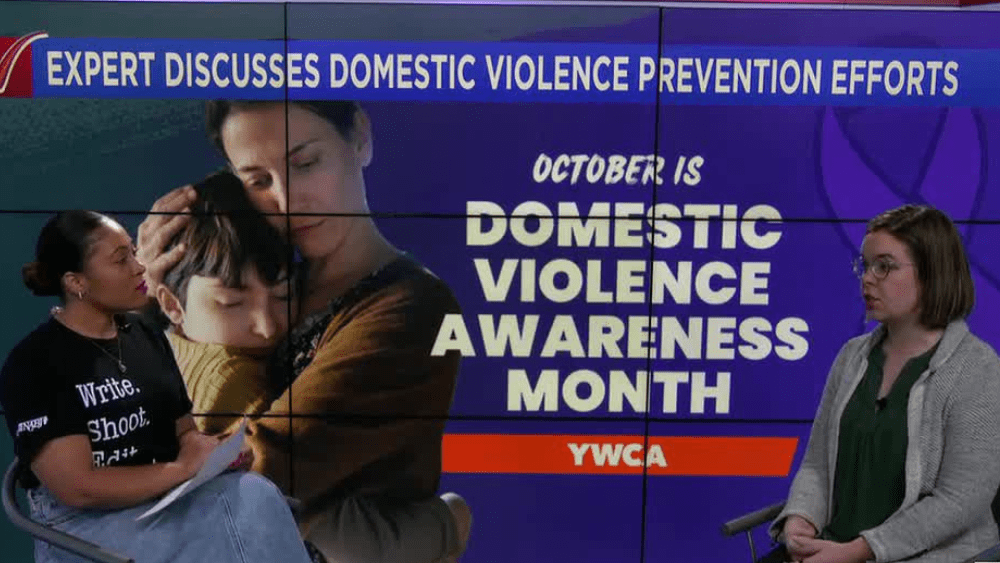Report on Domestic Violence in the Context of Sustainable Development Goals
In observance of Domestic Violence Awareness Month, this report analyzes the issue of intimate partner violence through the lens of the United Nations Sustainable Development Goals (SDGs). Statistical data indicates that one in four women and one in ten men experience severe intimate partner violence, a reality that directly contravenes several global development targets, most notably SDG 5 (Gender Equality) and SDG 3 (Good Health and Well-being).
Manifestations of Domestic Violence and SDG Implications
Domestic violence is a multifaceted issue that undermines human dignity and security. Its various forms present significant barriers to achieving sustainable development.
Forms of Abuse
- Physical Abuse: Directly impacts SDG 3 by causing injury and long-term health problems.
- Emotional Abuse: Adversely affects mental health, a key component of SDG 3 (Good Health and Well-being).
- Sexual Abuse: A severe violation of human rights and a critical barrier to SDG 5 (Gender Equality).
- Financial Abuse: Impedes economic independence, hindering progress on SDG 1 (No Poverty), SDG 5, and SDG 8 (Decent Work and Economic Growth).
- Technology-Facilitated Abuse: A modern form of control that infringes on personal freedom and safety, impacting SDG 16 (Peace, Justice and Strong Institutions).
Early Detection and Prevention Aligned with SDG Targets
Recognizing the warning signs of abuse is critical for early intervention and prevention, aligning with the SDG principle of ensuring safe and inclusive societies.
Key Warning Signs
The following behaviors are indicators of potential abuse and undermine an individual’s ability to live a free, healthy, and productive life as envisioned by the SDGs:
- Constant criticism, such as being told you never do anything right.
- Extreme jealousy and possessiveness regarding friends or time spent apart.
- Isolation tactics, including preventing or discouraging time with others.
- Public or private insults, demeaning language, and shaming.
- Controlling access to education or employment, which directly obstructs SDG 4 (Quality Education) and SDG 8 (Decent Work).
- Exercising financial control or expropriating money, undermining economic autonomy (SDG 5, SDG 8).
- Sexual coercion or pressure to perform unwanted sexual acts (SDG 5).
Support Structures and Institutional Responses for Achieving SDGs
Effective institutional responses are essential for supporting survivors and achieving SDG 16 (Peace, Justice and Strong Institutions). Organizations like the YWCA provide services that are fundamental to this goal.
Comprehensive Support Services
The provision of holistic support services helps survivors rebuild their lives and contributes to multiple SDGs:
- Emergency Shelter and Housing: Addresses immediate safety needs and contributes to SDG 11 (Sustainable Cities and Communities).
- Crisis Hotlines and Counseling: Provides critical mental health support, advancing SDG 3 (Good Health and Well-being).
- Medical and Legal Advocacy: Ensures access to health services (SDG 3) and justice (SDG 16).
- Financial Literacy Training: Empowers survivors economically, supporting SDG 1 (No Poverty) and SDG 5 (Gender Equality).
- Community Prevention Education: A key strategy for the long-term achievement of SDG 5 by working to eliminate violence against women and girls.
Access to Justice and Information
Ensuring access to resources is a core component of SDG 16. The National Domestic Violence Hotline (1-800-799-SAFE) serves as a vital institutional mechanism, providing immediate, confidential support and access to information for individuals affected by domestic violence.
Analysis of Sustainable Development Goals in the Article
-
Which SDGs are addressed or connected to the issues highlighted in the article?
The article on Domestic Violence Awareness Month directly addresses and connects to several Sustainable Development Goals (SDGs). The primary goals identified are:
- SDG 3: Good Health and Well-being: The article discusses physical, sexual, and emotional abuse, all of which have severe impacts on the physical and mental health of victims. The mention of “sexual violence, physical violence” directly relates to ensuring healthy lives.
- SDG 5: Gender Equality: Domestic violence is a key issue in gender equality. The article highlights this by stating, “1 in 4 women and 1 in 10 men will experience sexual violence, physical violence, and/or stalking by an intimate partner.” The disproportionate impact on women makes this a central concern for SDG 5, which aims to end all forms of violence against women and girls.
- SDG 16: Peace, Justice, and Strong Institutions: This goal is relevant as it aims to reduce all forms of violence and promote access to justice. The article’s focus on violence and the mention of resources like the “National Domestic Violence Hotline” and YWCA services, including “medical and legal advocacy,” point to the need for institutional support and justice for survivors.
-
What specific targets under those SDGs can be identified based on the article’s content?
Based on the issues discussed, the following specific SDG targets can be identified:
- Target 5.2: “Eliminate all forms of violence against all women and girls in the public and private spheres, including trafficking and sexual and other types of exploitation.” This is the most directly relevant target, as the entire article is about domestic violence, which includes the “physical abuse, emotional abuse, sexual abuse” mentioned. The statistic “1 in 4 women” underscores the urgency of this target.
- Target 16.1: “Significantly reduce all forms of violence and related death rates everywhere.” The article’s subject is domestic violence, a primary form of interpersonal violence that this target aims to reduce. The services mentioned are mechanisms to achieve this reduction.
- Target 3.4: “By 2030, reduce by one third premature mortality from non-communicable diseases through prevention and treatment and promote mental health and well-being.” The discussion of “emotional abuse” and warning signs like being demeaned or shamed directly relates to the promotion of mental health and well-being for survivors.
-
Are there any indicators mentioned or implied in the article that can be used to measure progress towards the identified targets?
Yes, the article mentions and implies several indicators that can be used to measure progress:
- Direct Indicator: The article provides a key statistic: “1 in 4 women and 1 in 10 men will experience sexual violence, physical violence, and/or stalking by an intimate partner in their lifetime.” This prevalence rate is a direct measure related to SDG indicators.
- This aligns with Indicator 5.2.1: “Proportion of ever-partnered women and girls aged 15 years and older subjected to physical, sexual or psychological violence by a current or former intimate partner.”
- It also aligns with Indicator 16.1.3: “Proportion of population subjected to physical, psychological or sexual violence in the previous 12 months.”
- Implied Indicators: The article implies other ways to measure progress through the types of abuse and services available.
- Types of Abuse: The list of abuse forms (“physical abuse, emotional abuse, sexual abuse, financial abuse, and technology-facilitated abuse”) can be used to create disaggregated data to track the prevalence of different forms of violence.
- Access to Services: The mention of YWCA services (“emergency shelter and housing, crisis hotlines, counseling, supervised visitation services”) and the National Domestic Violence Hotline implies that the availability and accessibility of such support systems are crucial indicators of progress in providing justice and support for survivors.
- Direct Indicator: The article provides a key statistic: “1 in 4 women and 1 in 10 men will experience sexual violence, physical violence, and/or stalking by an intimate partner in their lifetime.” This prevalence rate is a direct measure related to SDG indicators.
SDGs, Targets, and Indicators Table
| SDGs | Targets | Indicators |
|---|---|---|
| SDG 5: Gender Equality | Target 5.2: Eliminate all forms of violence against all women and girls in the public and private spheres. | Indicator 5.2.1 (Implied): The statistic “1 in 4 women…will experience sexual violence, physical violence, and/or stalking by an intimate partner” serves as a measure of the proportion of women subjected to intimate partner violence. |
| SDG 16: Peace, Justice, and Strong Institutions | Target 16.1: Significantly reduce all forms of violence and related death rates everywhere. | Indicator 16.1.3 (Implied): The prevalence rate of violence (“1 in 4 women and 1 in 10 men”) is a direct measure for this indicator. The availability of resources like the “National Domestic Violence Hotline” and “legal advocacy” can serve as an indicator of institutional response to violence. |
| SDG 3: Good Health and Well-being | Target 3.4: Promote mental health and well-being. | Indicator (Implied): The article’s description of “emotional abuse” and warning signs like “insulting, demeaning, or shaming you” points to the prevalence of psychological violence, which impacts mental health. The availability of “counseling” services is an indicator of support systems for mental well-being. |
Source: am1100theflag.com






